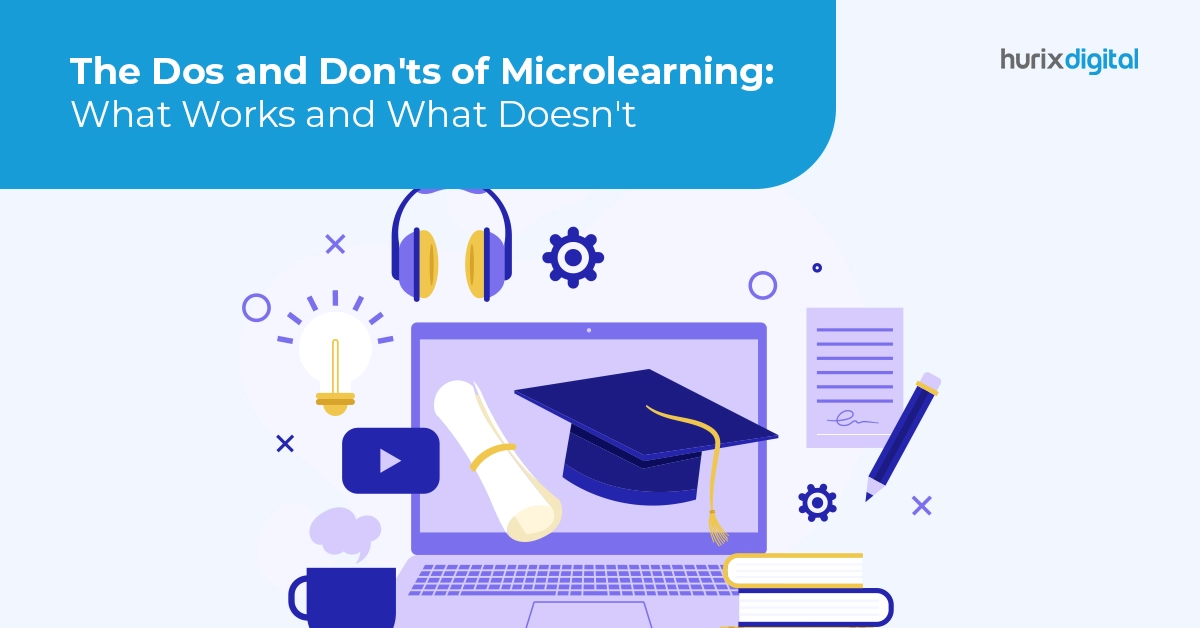In a fast-paced, digital world, it is bite-sized information that matters. And so, enterprises are now adopting microlearning content as a means to impart training to their employees and also to provide the information they need in a fraction of time.
Microlearning offers great convenience of time and access in a fast-paced world. It is particularly appealing to learners who need precise and just-in-time information for performance support. (How Can Microlearning Nuggets Influence Sales Performance)
Microlearning can be formal or informal, however, in most cases, it is the latter. It is more learner-centric in nature and provides instant needs-based information.
Besides, since each bite-sized nugget is about 3 to 5 minutes long, there is no information overload, and so the learners can learn, assimilate and retain better.
Microlearning is also appealing to businesses because it is fast-paced, affordable and lasts for a short duration. It costs less than traditional eLearning and can be developed, updated and deployed conveniently and quickly.
This being said, creating microlearning content is no easy task – given the short duration, you have to ensure that the information you provide is concise and accurate, closes all immediate information gaps, and is packaged in an engaging way using various media formats.
Discover Does Microlearning Lead to Training Success?
Table of Contents:
- Nine tips for creating engaging microlearning content:
1. Know Your Audience
2. Use a Responsive eLearning Authoring Tool
3. Create Short Videos to Target a Wide Range of Needs
4. Focus on a Specific Topic
5. Avoid Repetition
6. Deploy Visually Rich Content
7. Use the Power of Storytelling
8. Include Interactive Demos
9. Use Conversational Tone - Conclusion
Some tips for creating engaging microlearning content that your employees will retain -
1. Know Your Audience
It is important to understand your target audience, their current level of skills and the knowledge gaps that need to be plugged. In today’s digital era, people are bombarded with information and so it is difficult to capture and retain their attention.
For microlearning to be effective, you should be able to cut through the noise and drive engagement, and the first step in this direction is to know your audience, what they want, and in what format they want their content.
Here are some Microlearning Design Techniques for a Great Learning Experience.
2. Use a Responsive eLearning Authoring Tool
A responsive mobile-first learning tool empowers you to create a master layout, which can be effectively viewed on all types of browsers. The tool will automatically reframe your content based on the screen size and resolution of the screen on which it is being viewed.
So, whether your employees view the microlearning content on a tablet, laptop or smartphone, they will receive the same benefit from the course. The other benefit is that they will be able to access mobile-ready content while on the move, on-the-job or when they have some free time in their busy schedule.
Here’s a list of 5 Best Content Authoring Tools for Your E-learning Needs and more on How to Select the Right eLearning Authoring Tools and Services
3. Create Short Videos to Target a Wide Range of Needs
Microlearning content is mostly in the form of videos usually 3 to 5 minutes in length. Learners can quickly watch these videos to explore a topic or know the steps to follow for a particular task. Auditory learners also benefit since they can absorb the content presented in the form of audio while visual learners benefit from images and graphics.
And for the hearing-impaired learners, you can even add captions and subtitles. While creating a video, do make sure to provide complete control to your learners, for example, they should be able to rewind, forward or pause to fully grasp the subject.
4. Focus on a Specific Topic
Your microlearning content should focus on the subject at hand to prevent cognitive overload. It’s very important to understand what you wish to convey and that you filter through the information so that you don’t cover too much ground in a single nugget.
The best way forward is to stick to the topic and then provide links for additional information so the learners can explore sub-topics in their free time and access articles and other online resources. Including linked resources also saves time as employees don’t have to browse through the Internet in search of additional information.
5. Avoid Repetition
While repetition is effective in online learning, keep in mind that this may not work in the microlearning context. As said, the ideal duration of a microlearning video is generally three to five minutes, which learners can access anytime, anywhere, during commuting or work breaks.
And during this time, they will not be able to sit through a 15-minutes video. Also, in case they feel the need to repeat a task, they simply have to replay the video and review the steps again.
6. Deploy Visually Rich Content
The best thing about microlearning is that you can leverage different types of digital media to create interesting and immersive content. For example, you can present your content in the form of infographics highlighting facts, stats and trends that your employees should be familiar with.
There are a vast variety of microlearning authoring tools you can use to create audio-visual content with stunning graphics; or even use virtual reality, simulations and animations to create an interactive video that allows your learners to learn by doing.
7. Use the Power of Storytelling
Nothing captures imagination than an interesting, well-told story. Stories are emotionally compelling that draw in the audience, taking them along a journey, while marking out several milestones along the way.
In corporate learning, stories can be in the form of real-life examples that highlight the benefits of a particular product or service, or the practical applications of a subject matter. You can also make the story more compelling by adding background music, narration and relevant images and graphics.
8. Include Interactive Demos
These interactive demos are a great way to allow your learners to apply what they have learnt. Instead of just reading or listening to an eLearning lesson, create an interactive demo with features such as drag-and-drop interactions, games, simulations and clickable walk-throughs that enable the learners to interact with the video and put their knowledge and skills to test.
Also, include feedback and assessment that allow them to course correct and also perfect their problem-solving skills.
Know More: Does Microlearning Lead to Training Success?
9. Use Conversational Tone
Effective microlearning nuggets should be informal and always be in an active voice. The idea is to avoid narratives and keep the conversation clear, simple and focused. Besides, learners can relate more to a conversational tone.
Conclusion
Microlearning is fast gaining ground and is seen as the future of eLearning. Learners today are hard pressed for time and their attention span is also limited. Microlearning is a great way to provide them bite-sized content which they can consume and assimilate anytime and anywhere, and within a short span of time.
Learn about Emerging eLearning Technologies – Driving the Change
To achieve the best learning outcomes, create microlearning content that is focused on a particular topic, is linked for additional information and is packaged in a way that can engage your audience.
Related:
- 5 Reasons to Integrate Microlearning in Mobile Learning Strategy!
- 7 Tips to Create Custom E-Learning Content on a Budget
- Top eLearning Development Companies for Enterprises & SMBs
- MicroLearning vs Mobile Learning – Similarities and Differences
- 7 Tips to Create Custom E-Learning Content on a Budget
- Transform L&D with Future-Ready mLearning Solutions
- 5 Ways to Create Effective Interactive Training Content











